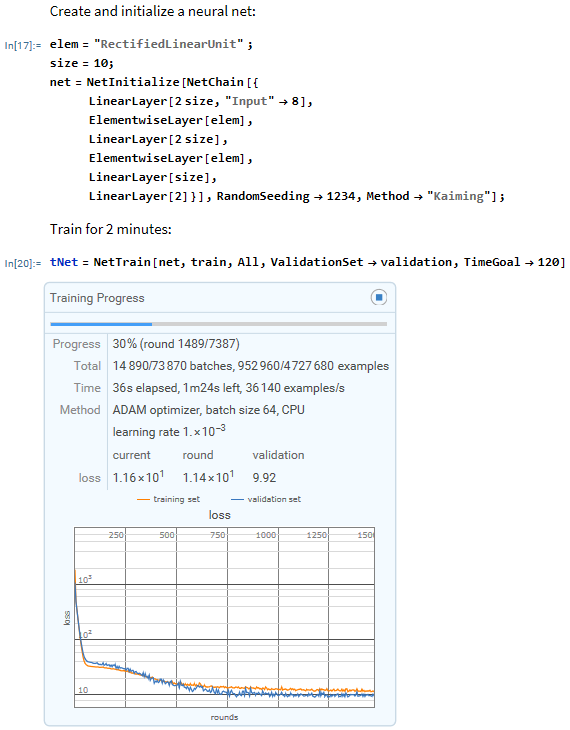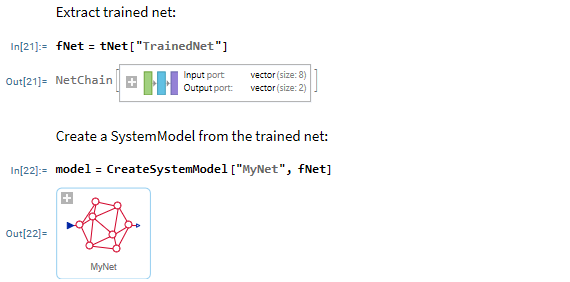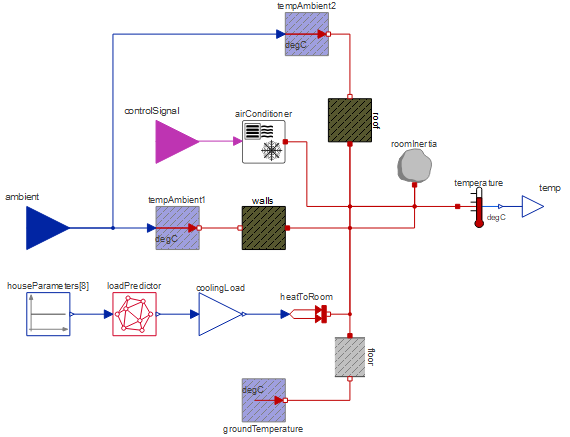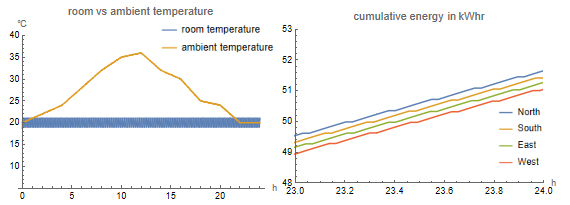Energy
Use System Modeler to develop accurate models of wind, solar, and other power generation and distribution systems. Combine with Mathematica for further optimization and analysis.
Air Conditioning: Effect of Building Orientation
Which building properties affect the energy spent in air conditioning? This example uses data from 768 diverse residential buildings to predict their air conditioning’s thermal load by training a neural network. Connect this net with thermal modeling components to study the effect of building orientation.
To run this example, you'll need
The latest versions of System Modeler and Mathematica.
Please make a selection:
Get afree trial Continue
with download
Preprocess Data
A dataset containing thermal load requirements based on building parameters such as compactness, glazing or orientation is used. The dataset is imported into the Wolfram Language and cleaned to make it suitable for model training.

Dataset obtained from A. Tsanas and A. Xifara, "Accurate Quantitative Estimation of Energy Performance of Residential Buildings Using Statistical Machine Learning Tools," Energy and Buildings, 49, pp. 560–567, 2012.
Train a Neural Net
The data is split for training and validation. A neural net consisting of multiple layers is created, and all its learnable parameters are initialized.

The neural net is trained using the training data and tested against the validation data.
Create a SystemModel
The trained neural net is converted to an input-output block that can be connected to other models.

CreateSystemModel takes a trained NetChain or NetGraph and creates a SystemModel.
Connect to the Building Model
The model is then attached to a single-room building model that consists of walls, roofs and an air conditioner. The connected model can be fed with external temperature data, and its energy performance can be tested.

A single-room building model.
Study Effect of Orientation
Change the orientation of the building and analyze the power consumed by the air conditioner. A building facing west has the lowest energy consumption, while a building facing north has the highest energy consumption.

The left plot shows the room temperature for a building facing north. The right plot compares the cumulative energy consumed by the air conditioner for all the four orientations.
Wolfram System Modeler
Try
Buy
System Modeler is available in English
and Japanese
on Windows, macOS & Linux »
Questions? Comments? Contact a Wolfram expert »